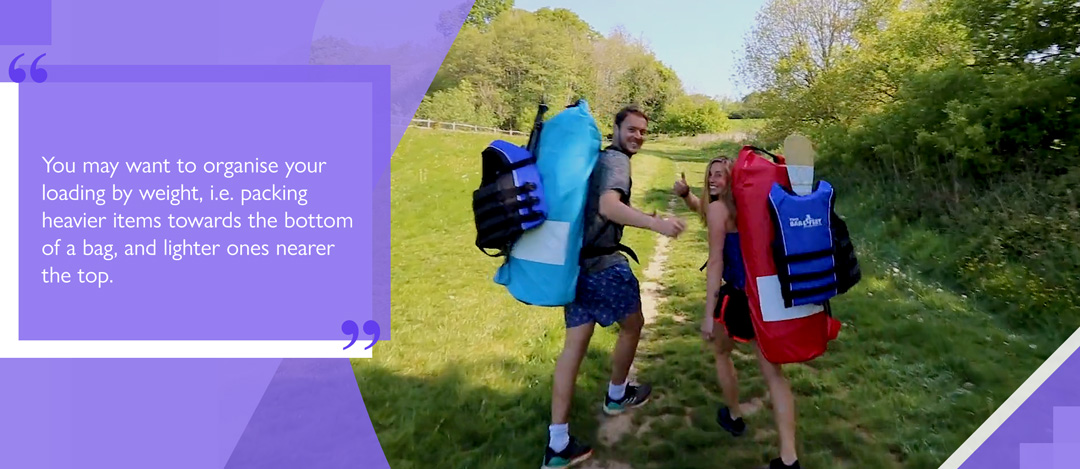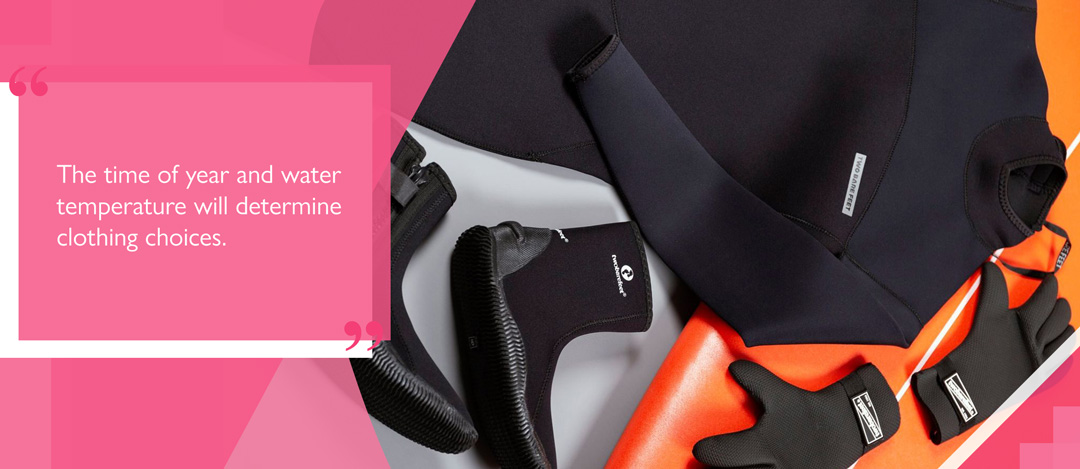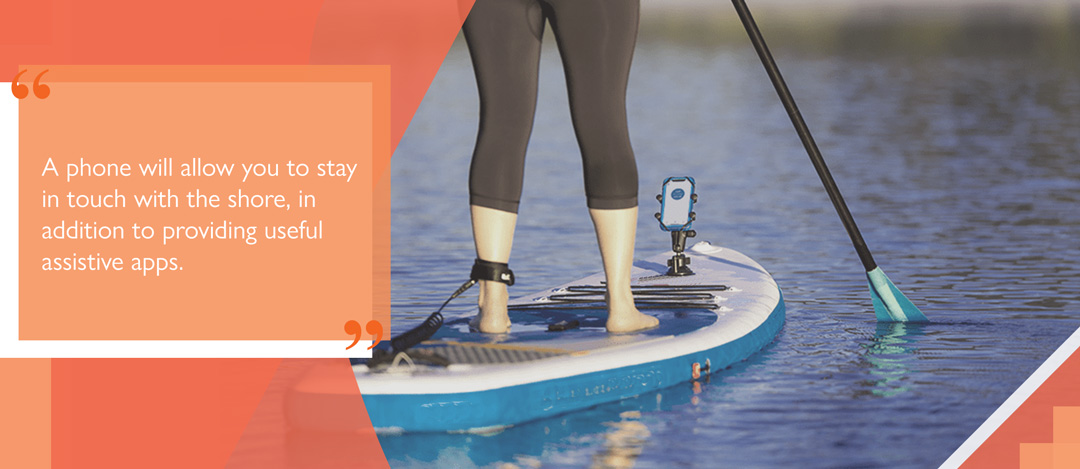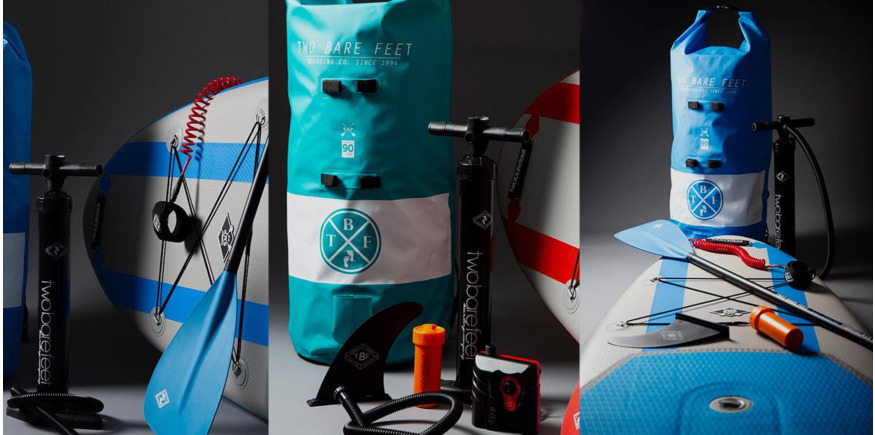When getting ready for a SUP trip, what you choose to take with you will broadly depend on the conditions you’ll face, and the amount of time you intend to spend on your excursion. You’ll also need to be space and weight conscious, as what you can carry will be limited by the size of your board and its maximum recommended payload.
Practice makes perfect
You’ll need to make a choice when considering an excursion: will you be going for more than one day? Any overnight trip will naturally need more equipment, making space more of a premium.
Your pre-packing prep will be key. Make a checklist of the items you want to take, gather them in one space, and then practise packing your kit into a good-sized dry bag, or a couple of dry bags for multi-day SUP trips.
When you’ve managed to pack your kit, unpack everything and attempt to repack the equipment. Experiment with different ways of getting your items to sit together, bearing in mind that you’ll probably want the items you need most frequently to be easily accessible. That may mean either packing them near the top of a dry bag, or in a separately accessible compartment.
You may also want to organise your loading by weight, i.e. packing heavier items towards the bottom of a bag, and lighter ones nearer the top. This can help with weight distribution when humping the bag over land, on your back.

Other things to consider
While dry bags are designed to keep items waterproof, they are not invulnerable to damage. Check that your dry bag is intact before leaving, and consider using additional dry liners as a secondary measure. This will also help to compartmentalise your equipment, making it easier to find things quickly while on the float.
On that note, it also makes a lot of sense to keep the items you want to keep dry, like a change of clothes, away from something that is likely to get wet from usage.
As part of your pre-travel prep, you could also try loading your packed equipment on to your board in a test environment, if it is possible. You’ll want to ensure your board is going to remain stable while your kit is stowed and isn’t too heavy.
Distribution of weight is important: if you load too much to the front of the board, the nose could begin to dip. In calm conditions, this may not be too much of a problem, but if you are riding into waves, could allow water to get onto the deck and potentially into your cargo, as well as making paddling more difficult.
Packing for a SUP daytrip
You’ll be carrying less for a single day on the water, but that doesn’t necessarily mean you can afford to be lax in your packing. Regardless of whether you’re out for a few hours or overnight, there will always be a core set of equipment you will need in addition to the all-important dry bag.
Single-day SUP essentials
Paddleboard
As an inflatable SUP user, you will be at a distinct advantage when it comes to transporting your ride as it can be easily deflated, packed in a carry bag, and inflated at the water’s edge or close to the launch site.
As a side note, you may want to invest in an iSUP designed to make touring a better experience. These are typically at the longer end of the range, and have a thicker 6-inch base. The greater volume improves buoyancy, and allows for greater payloads to be carried. The narrower profile promotes speed and straight-line glide through the water.
Two Bare Feet’s 11’6” Entradia boards and 12’0” Archer and Sport Air models are great examples of Touring rides that you may want to consider for longer journeys.
SUP Paddle
A strong, but lightweight paddle will make extended journeys easier to manage — retaining performance while reducing fatigue.
Repair kit
It’s unlikely that your inflatable SUP will puncture, but it’s best to be prepared. Read more on iSUP punctures in our blog post on the topic.
Personal Flotation Device or Buoyancy Aid
Not necessarily on everyone’s list of essentials: it depends on your level of confidence and whether you think being leashed to your SUP is sufficient. If you know you are going to be paddling alone or you are a novice paddler, you should consider it.

Leash
A leash will keep you connected to your board. If you capsize, you won’t lose your board and it will give you something on which to keep afloat. Consider a quick-release leash to provide the option of detaching from the board if you get trapped or caught by an underwater object.
SUP pump
You won’t be able to inflate your board without a SUP pump.
Clothing suited to the conditions
The time of year and water temperature will determine clothing choices. This could mean a thicker 5/4 neoprene wetsuit in winter, a thinner short-sleeved suit in summer, a rash vest to either add an insulating layer or protect from UV rays, or just a pair of board shorts and t-shirt, or a bikini.
In addition, protection from the sun is important. In addition to packing the sunscreen, take a brimmed hat or cap to cover the head, and sunglasses — preferably attached to an adjustable cord so you’re not parted from them easily.
Dry clothing
You’ll want something to change into after getting out of the water. In addition, it may be worth taking additional windproof or waterproof layers out with you in case weather conditions change during the trip.
Water and snacks
Take extra bottled or purified water with you, or carry a hydration pouch / backpack. It’s important to stay hydrated while you are exposed — particularly in strong sunlight. You’ll also need to consider when and where you are going to eat. You won’t necessarily be able to stop in a timely manner to find food, so having food with you will help alleviate this problem.
Phone and/or two-way radio
A phone will allow you to stay in touch with the shore, in addition to providing useful assistive apps for things such as journey tracking. It’s particularly important that someone knows where you’ve gone when heading out solo. Having a phone makes you reachable. Be sure to carry it in a waterproof case.
In more remote areas there may not be good phone signal coverage, so a two-way radio may be a good alternative. A radio provides the advantage of being able to contact other marine traffic and control centres, but bear in mind that you may need a licence to broadcast on some frequencies. Check before use.
Insect repellent
Biting insects like to congregate near rivers and lakes. Worth taking, especially in the warmer months.
Lip balm
Exposure to sun and wind can cause lips to crack, and this is generally not pleasant.
Cash / cards
Having access to small amounts of money is always useful for food or unexpected situations.
Packing for a multi-day SUP trip
While we won’t go into detail about planning for longer SUP trips, we will list some additional items you may wish to consider taking in addition to the basics listed above.
We’ll take a look at planning multi-day SUP trips in a future post.

Additional items for an overnight SUP excursion
- First-aid kit
- Minimal camping gear: Tent / bivvy; tarpaulin; sleeping bag; mat; pillow
- Portable cooker with fuel source
- Food rations and mess tins
- Lighter / spark flint
- Water filter / purifying tablets
- Extra paddle
- Extra fin
- Extra bungee cord (to tie down equipment on board)
- Portable phone charger
- Map and compass
- Torch or headlamp
- GPS beacon
- Whistle to attract attention
- Multi-tool
- Personal hygiene kit (loo roll, baby wipes, hand sanitiser, etc.)
To see some of the preparation that takes place before going out on the water, you may also want to check out the first video in our four-part ‘Two Bare Feet SUP Adventure’. It spotlights some of the considerations a paddleboarder should make when getting ready for an excursion.




